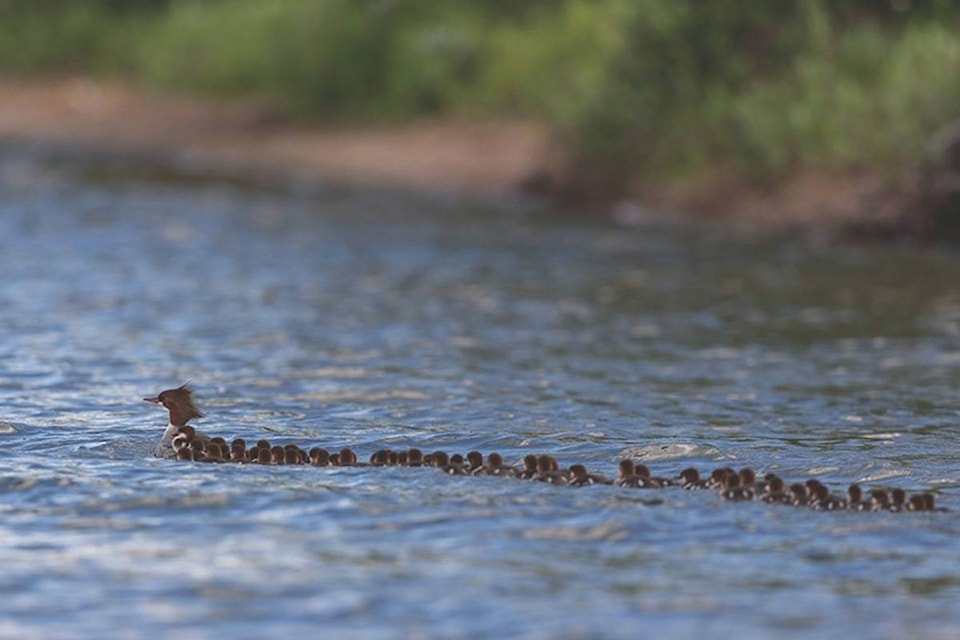LAKE BEMIDJI, Minn. — Ducklings by the dozens.
“Likes” in the millions?
A photograph of a common merganser with 56 ducklings in tow on Lake Bemidji has the internet agog. And the mother-of-all-duck photos has brought wild interest to the man who made it.
“It’s absolutely crazy,” said amateur photographer Brent Cizek, who awoke at 4 a.m. Wednesday intending to shoot more images of the ducks. Instead, he has been fielding phone calls and e-mails from around the world with media requests to talk about his arresting picture.
Out scouting for photos by boat June 27, Cizek happened to spot the duck horde and got a closer look with binoculars. He, too, was amazed at what he saw. Bobbing in waves, he managed several images. Cizek said his now-famous photo was the only decent take of mother and the little tufts of fluff, dutifully following.
Duck mania started to build after he uploaded his day’s collection to social media. The National Audubon Society swooped in with a story and his photos. Soon, others were in line hoping to talk to him.
While the ducks are lighting up media accounts across the world, several Minnesota wildlife experts who know birds are interested — but a bit less wowed.
Bob Dunlap, president of Minnesota Ornithologists’ Union, has seen some big broods, some as big as 20 members.
But how about this many?
“Nope,” he said, laughing. “It’s quite the spectacle.”
Dunlap said it’s common among waterfowl such as mergansers and others like wood ducks and common goldeneye to “egg-dump” — lay eggs in the nests of other birds, which then raise them. Even other species.
In the wildlife world, this new gathering of birds in the aftermath is called a creche. “It’s more like a day-care thing,” said Dunlap, adding that the fledglings will come to the care of one lead bird. That seems to be the case on Lake Bemidji, he added.
Dunlap said the scenario also could be evolutionary strategy, with birds spreading their offspring about to ensure the species — “the greatest chance at survival of their own genes.”
“My guess is it is a little bit of both going on,” Dunlap said.
Another possibility is that brood has added new ducklings that lost parents or leaned in to the protection of mother merganser. Since June, Cizek has posted more duck photos. In one image, there were as many as 76 ducklings. Dunlap said the family normally sticks together until the birds migrate in the fall.
Naturalist Mark “Sparky” Stensaas is founder of the nonprofit Friends of Sax-Zim Bog. The bog in northern Minnesota is a birding mecca. Stensaas has seen — and photographed — a lot of waterfowl in his time.
Stensaas said mergansers nest in the cavities of hollow trees, and are known to care for these new additions. Still, the Bemidji mergansers are new territory for Stensaas. “I’ve never seen anything like that,” he said.
Meanwhile, Cizek is having trouble finding the time to document more of their lives on social media and his photography website https://bit.ly/2LsFpVN.
“I was pretty flabbergasted what was going on with the ducklings,” said Cizek, reflecting on the fateful photo shoot in June. “I knew it was pretty special.”
Cizek, , said the current attention has been a bit overwhelming. Yet, he is OK with it if it brings some deeper appreciation for the wild.
“The more that people can learn about birds and wildlife conservation, the better.”
———
(c)2018 Star Tribune (Minneapolis)
